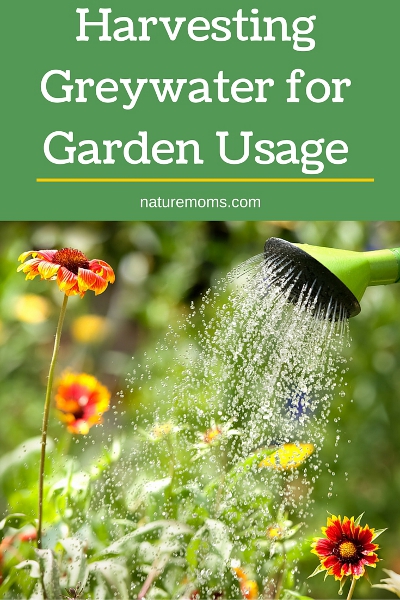 One of the most cost-effective and eco-friendly things a gardener can do is recycle water for use in the garden. Harvesting greywater to water vegetable plants and trees helps them thrive during times of drought, reduces your carbon footprint on the earth and will also help to lower your household’s water expenses.
One of the most cost-effective and eco-friendly things a gardener can do is recycle water for use in the garden. Harvesting greywater to water vegetable plants and trees helps them thrive during times of drought, reduces your carbon footprint on the earth and will also help to lower your household’s water expenses.
What is Greywater?
Greywater is water that has already been used in other household applications and gone down the drain. Water from sinks, showers, bath tubs and washing machines is called greywater. The used water will have traces of dirt, soap, hair, grease and household cleaning products in it which makes it have a grayish color, that’s how the gently used water got its name. These trace elements in the greywater can actually be good for plants and provide them with nutrients that help them grow. It all depends on what else gets washed down the drain.
Water from toilets is not suitable for recycling in the garden, nor is laundry water which has been used to wash cloth diapers. Toxics like paints, hair dye, or harsh cleaners, should never enter the greywater system, and should instead be routed through the municipal sewer.
How It’s Harvested
It will require a little elbow grease and perhaps some ingenuity to set up a catchment system for the greywater so it can be harvested and re-used.
PVC pipe can be attached to the drain systems of sinks, showers, tubs and washing machines so the used water can drain off to a separate location instead of going into the septic system. PVC pipes can be installed underground and take the water directly to the garden to provide moisture to growing plants from below the soil level.
PVC pipes can be connected to in-house drains and fabricated to carry the greywater to a central outdoor holding location so that the used water can be re-used at the gardener’s discretion.
A very simple and easy approach some homeowners use to catch greywater is to install drain pipes under the sinks, tubs and washing machines and run the open end of the pipes through the exterior walls to the outside. Barrels or tubs are placed under the open-ended pipes to catch the greywater and the gardener can use it as needed.
You will likely need to make some changes in what products you use and send down the drain but you won’t always be perfect so your system should have a three-way valve, which will allow wastewater to be routed back through the sewer as needed. A good filter designed for recycling greywater for garden use is also a good idea!
Household Changes
If water is to be re-used on plants, a few changes may be needed in the household to make the water safe for plant life. Using safer soaps for cleaning and bathing will be good for both you and your garden. Look for products that are biodegradable or biocompatible. Harsh cleaning chemicals, like chlorine bleach, will need to be avoided too. You will need to become a label reader if you are not already but all that water for your garden is worth it! And honestly if the product is not good for the earth can it really be that good for your body? Think about it.
Product Ingredients to Avoid in Greywater:
- boron/borax
- any ingredient with the word “sodium” in it
- chlorine bleach
- sodium perborate
- sodium hypochlorite
- petroleum distillate
- alkylbenzene
- water softeners
- anti-bacterial soaps & cleaners
- optical brighteners
- enzymes
- titanium oxide
- chromium oxide
- artificial colors
- synthetic fragrance
Good laundry detergents for greywater systems:
Homemade detergents – the ones based on soap and washing soda – are not an option because of their salt content.
Good soaps and shampoos for greywater systems:
Read your labels!! Most bar soaps have sodium ingredients so liquid is your best bet.
Once you get your greywater system set up and you buy the right household products, you can feel confident that you can sustain a garden even through droughts by simply reusing the water from your household. Good luck!
http://naturemoms.com/blog/2016/01/18/harvesting-greywater-for-garden-usage/